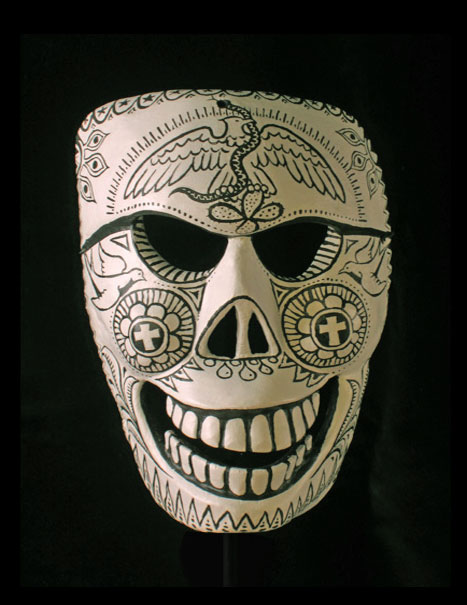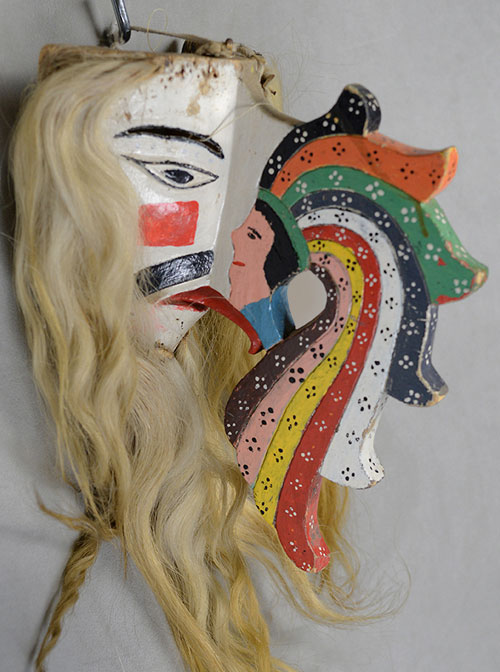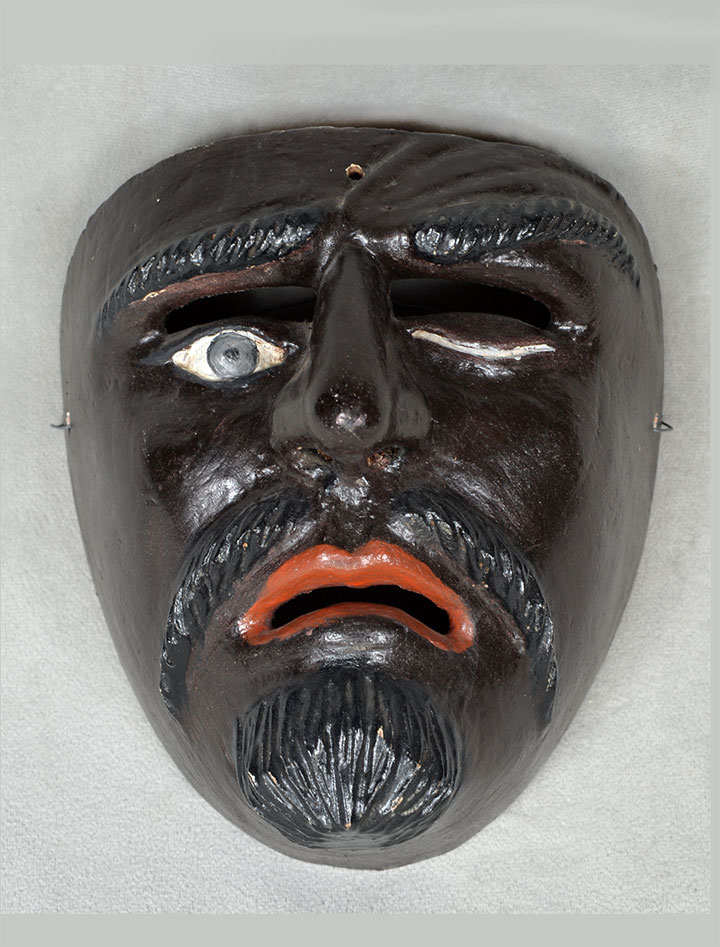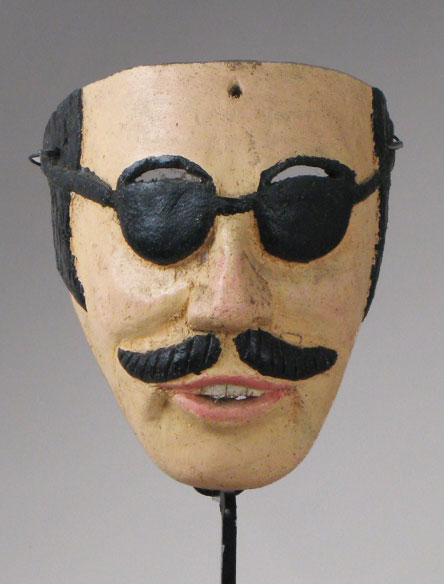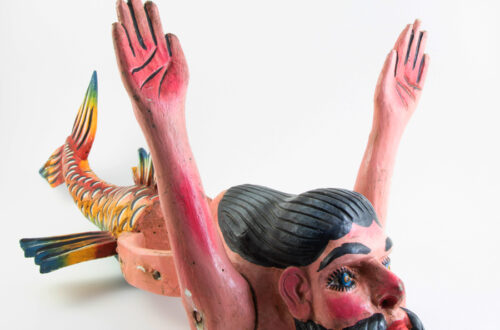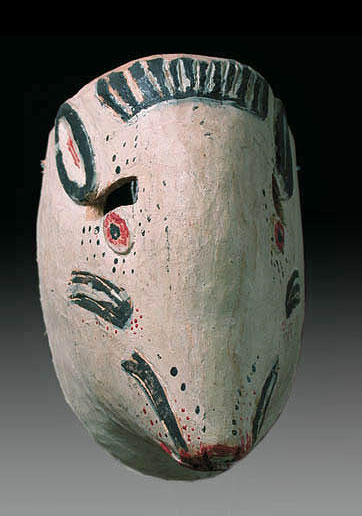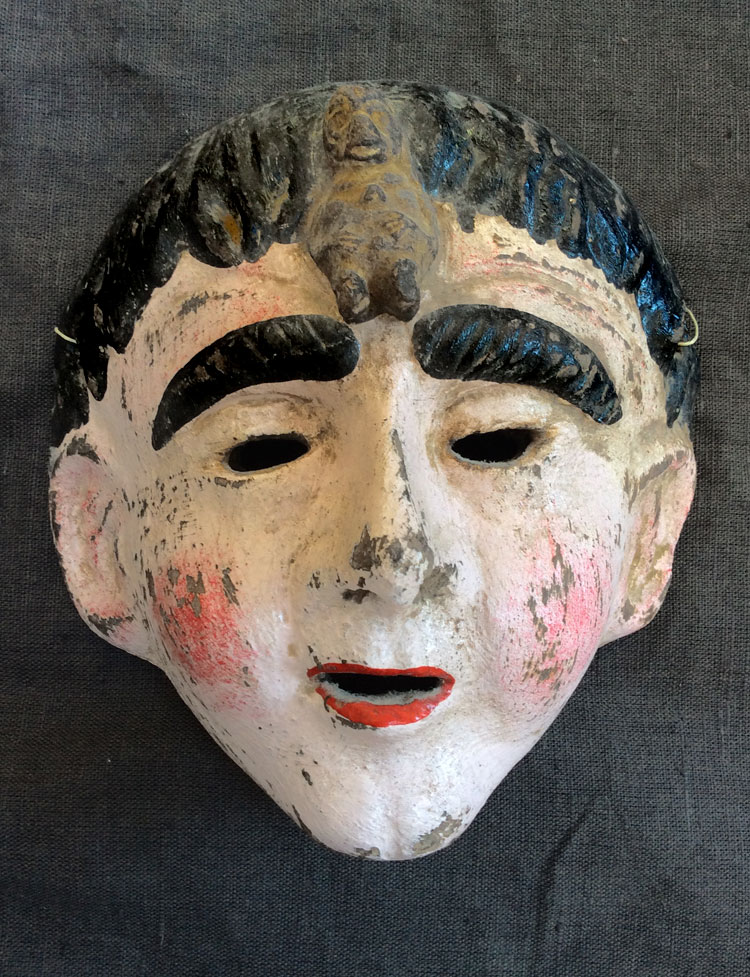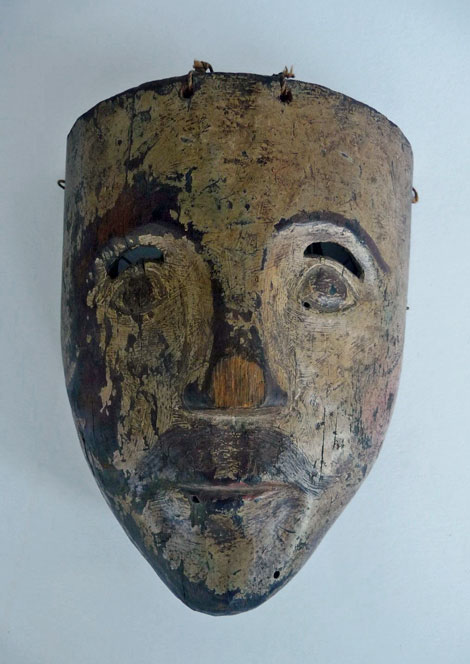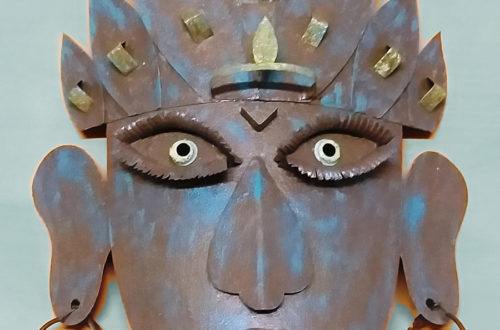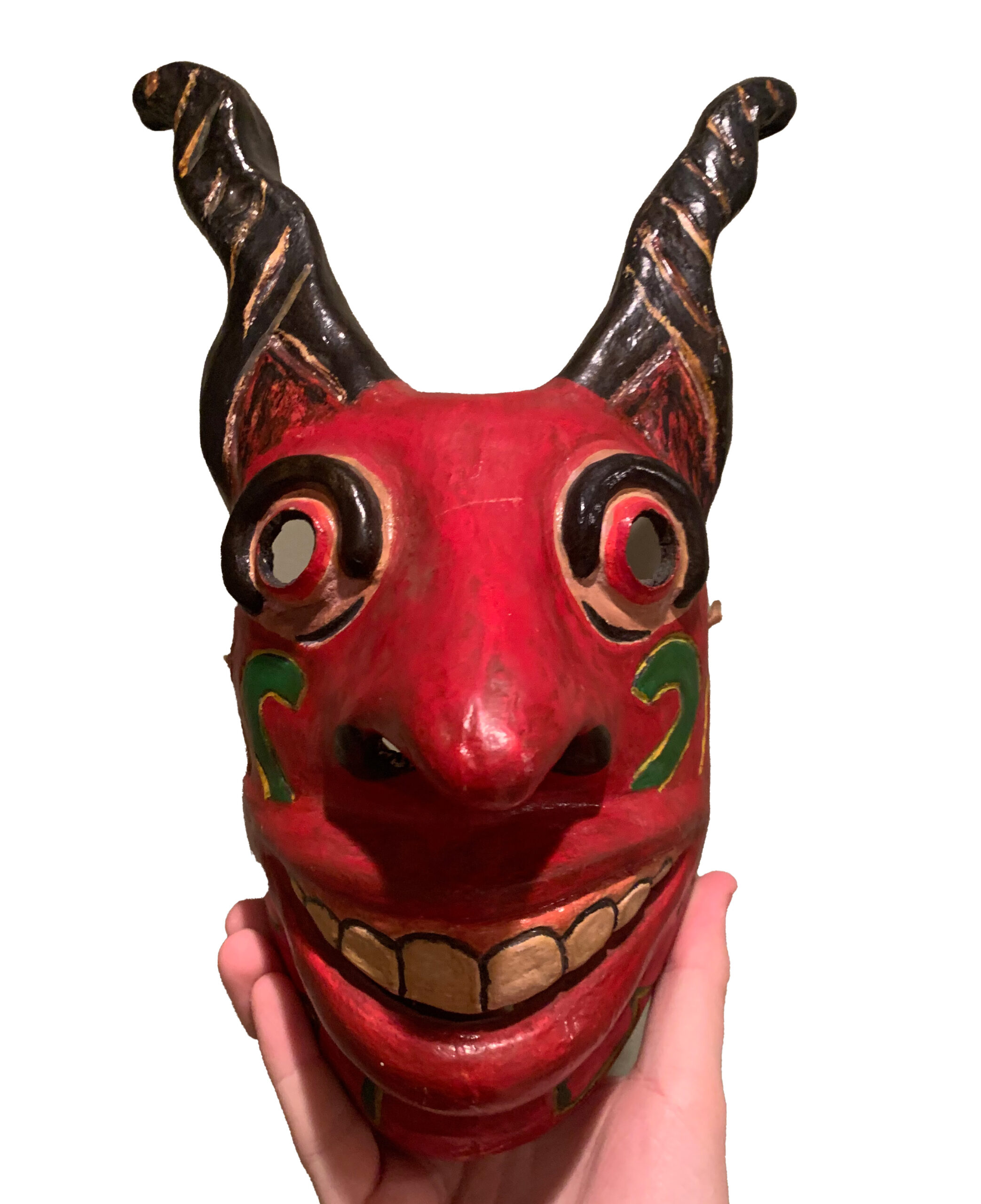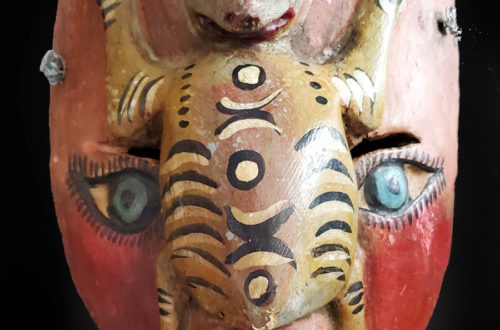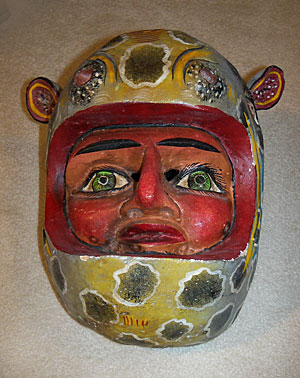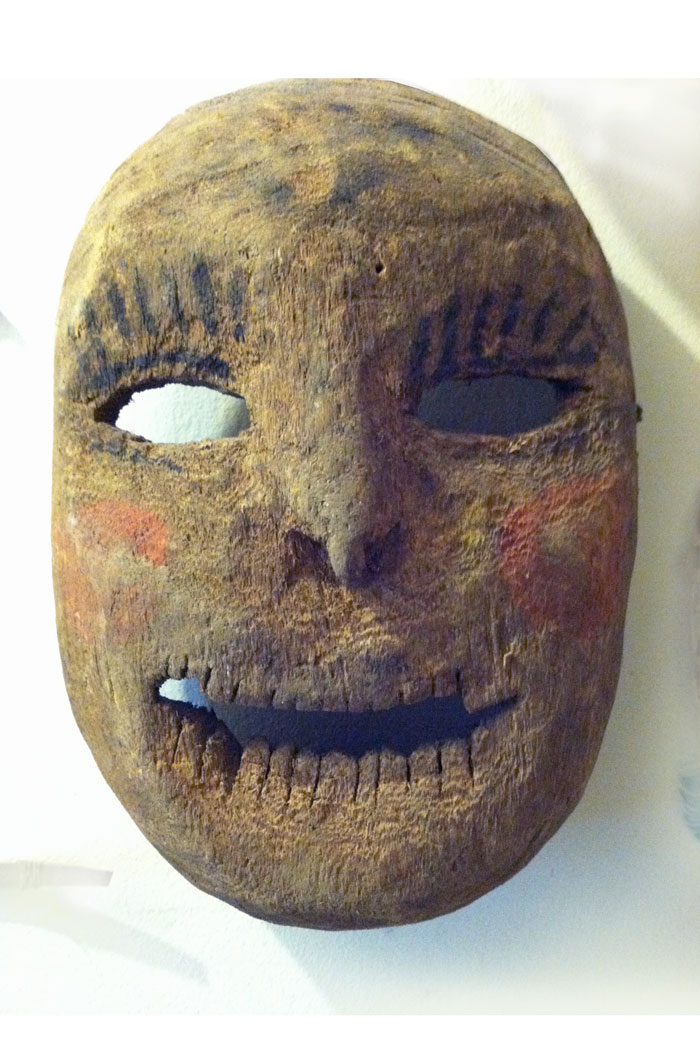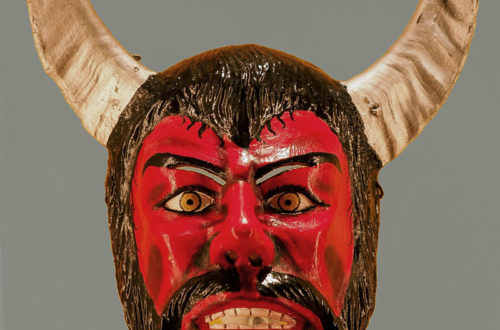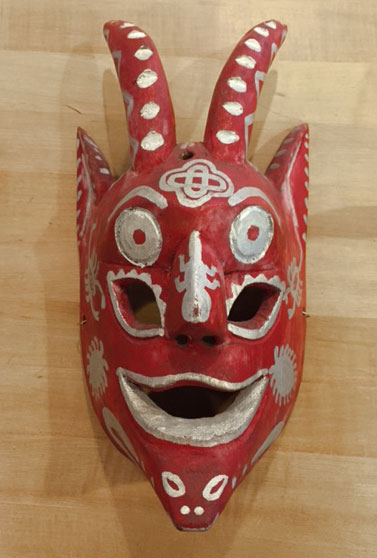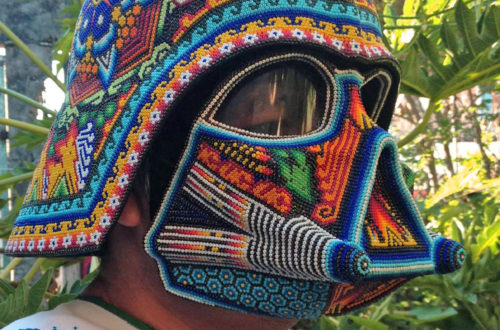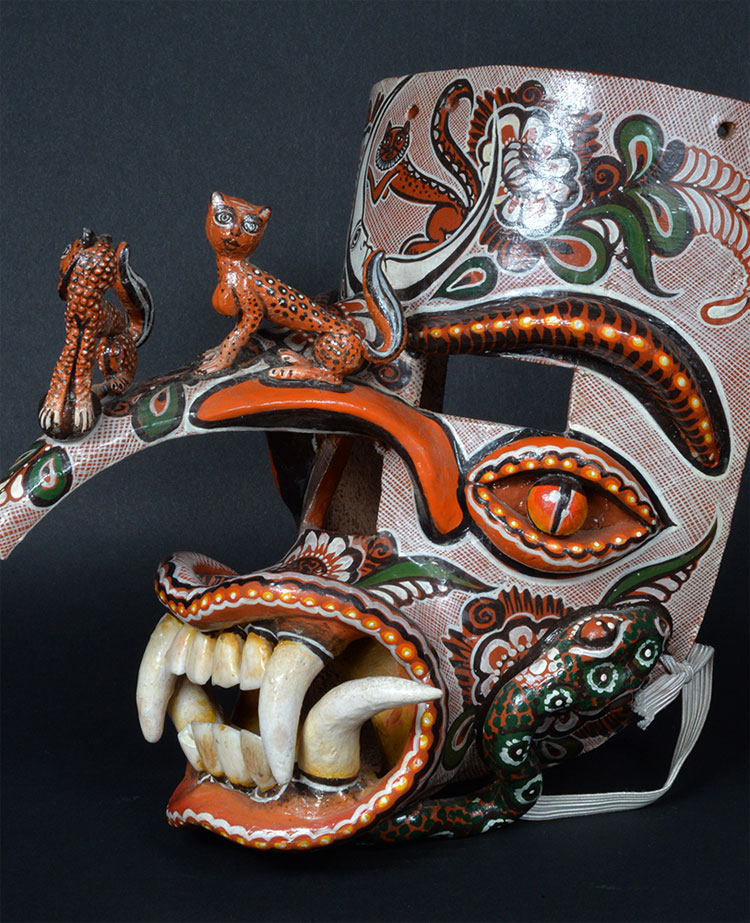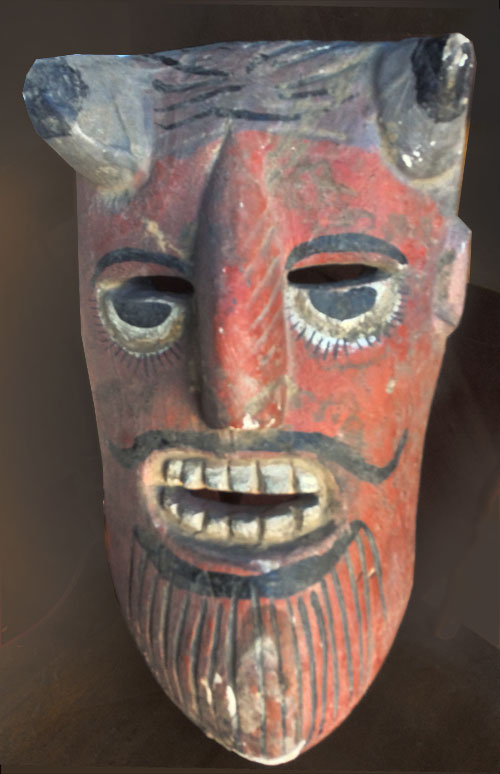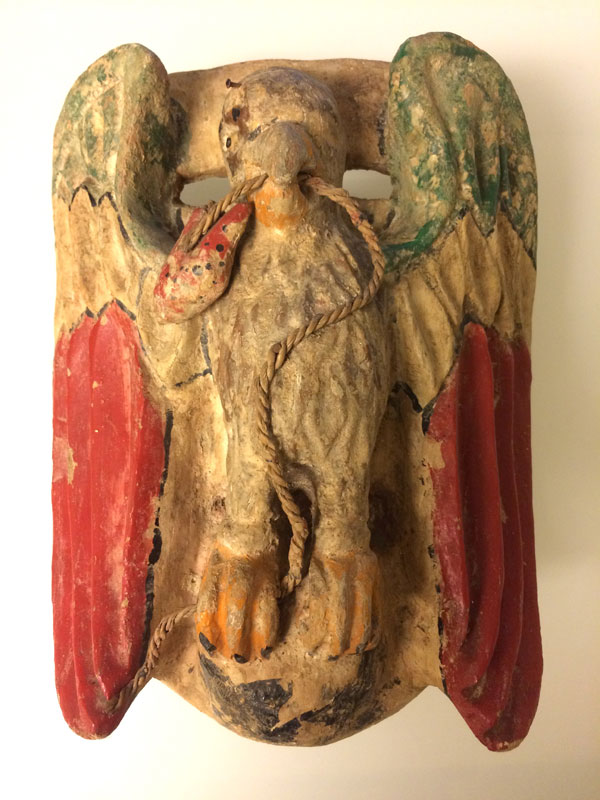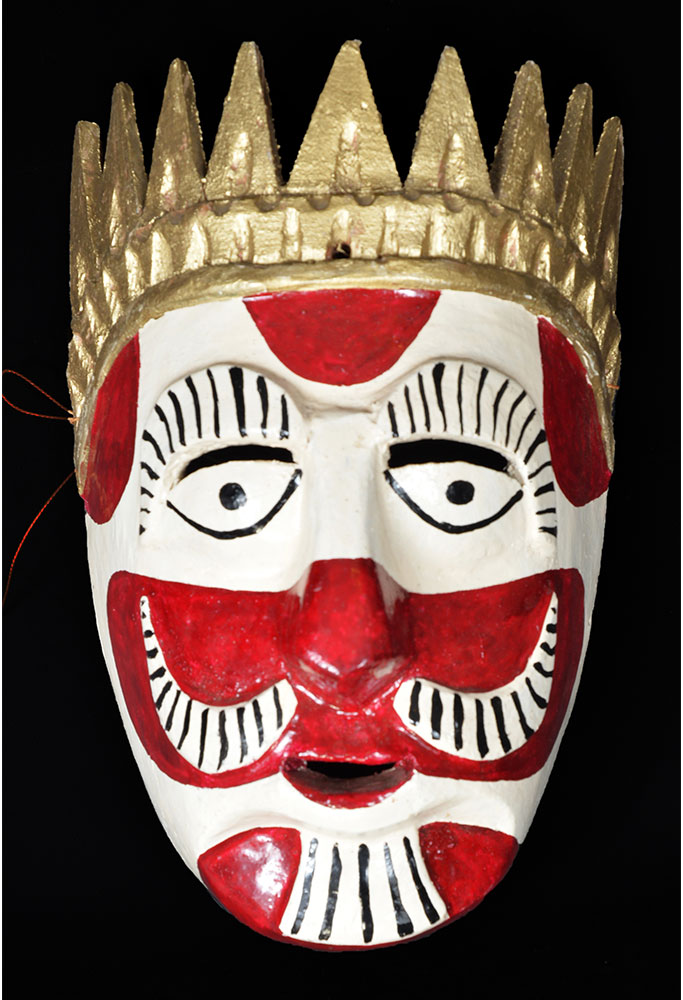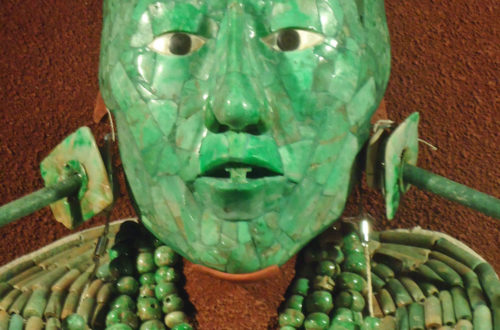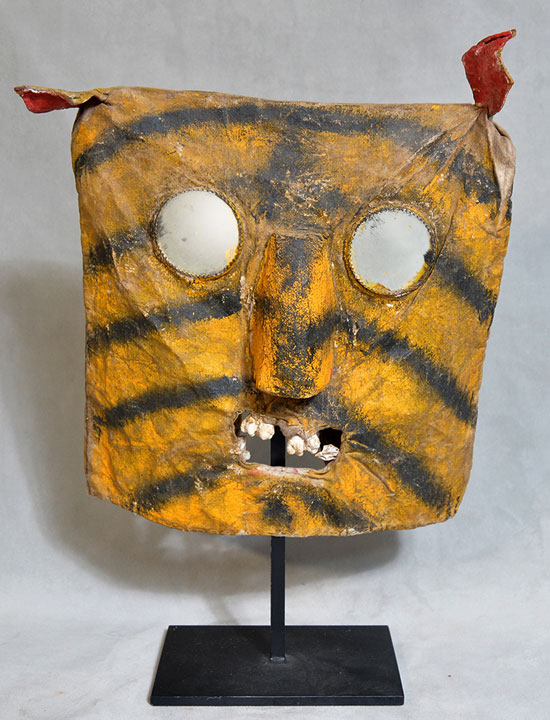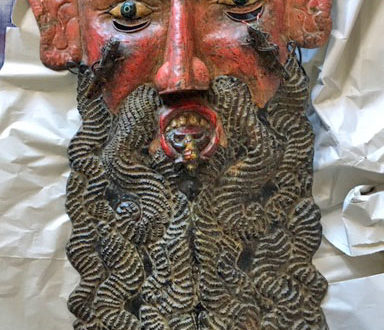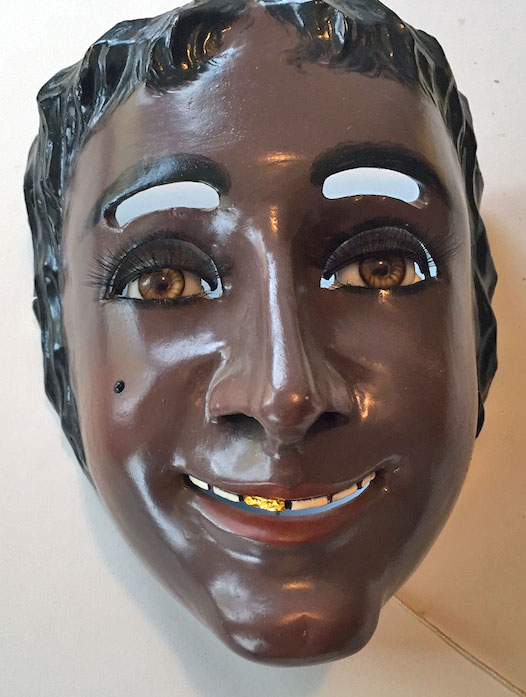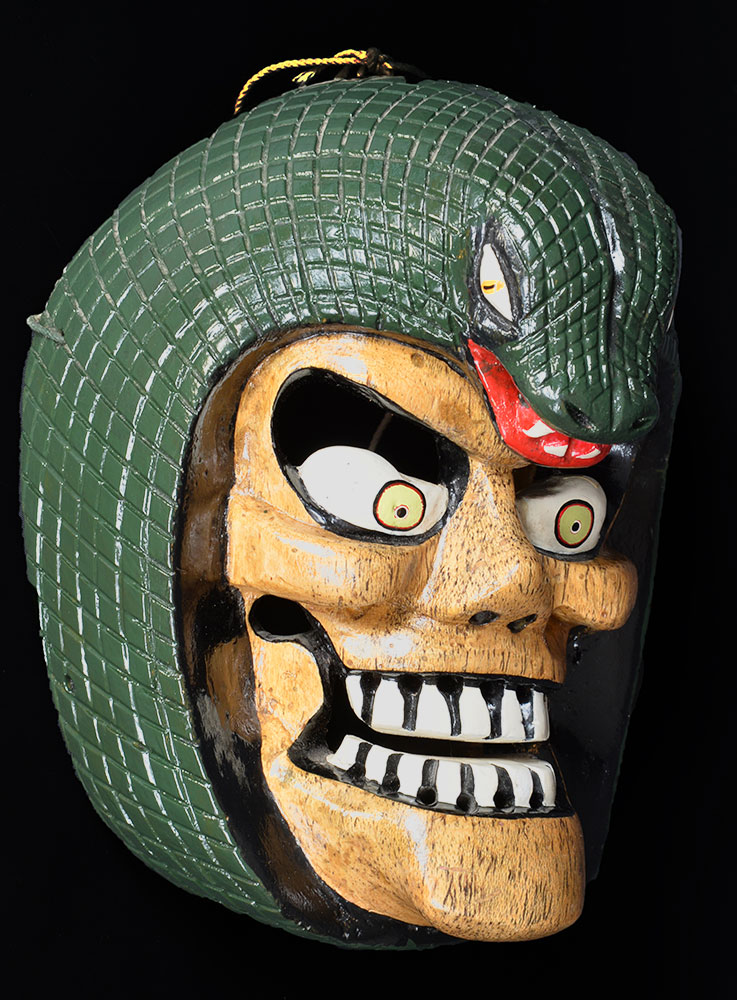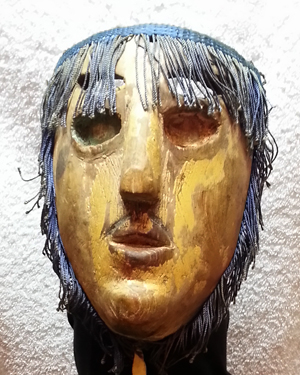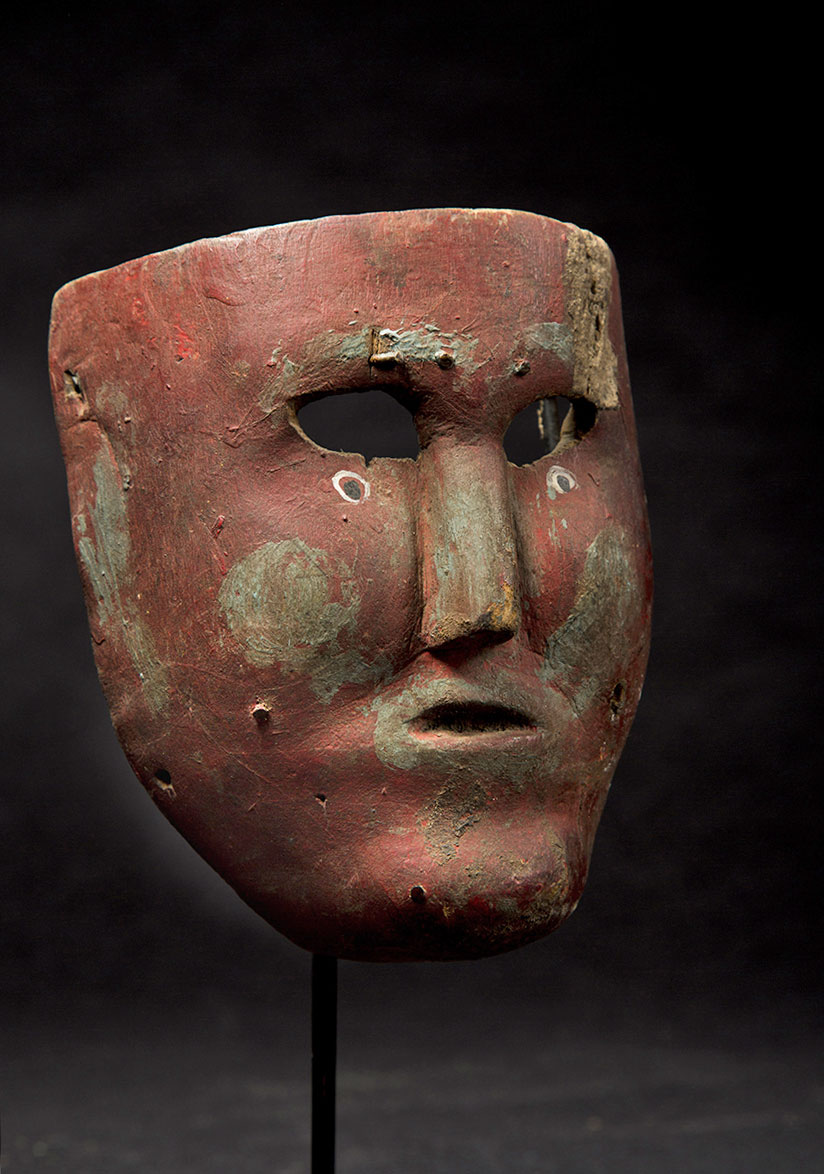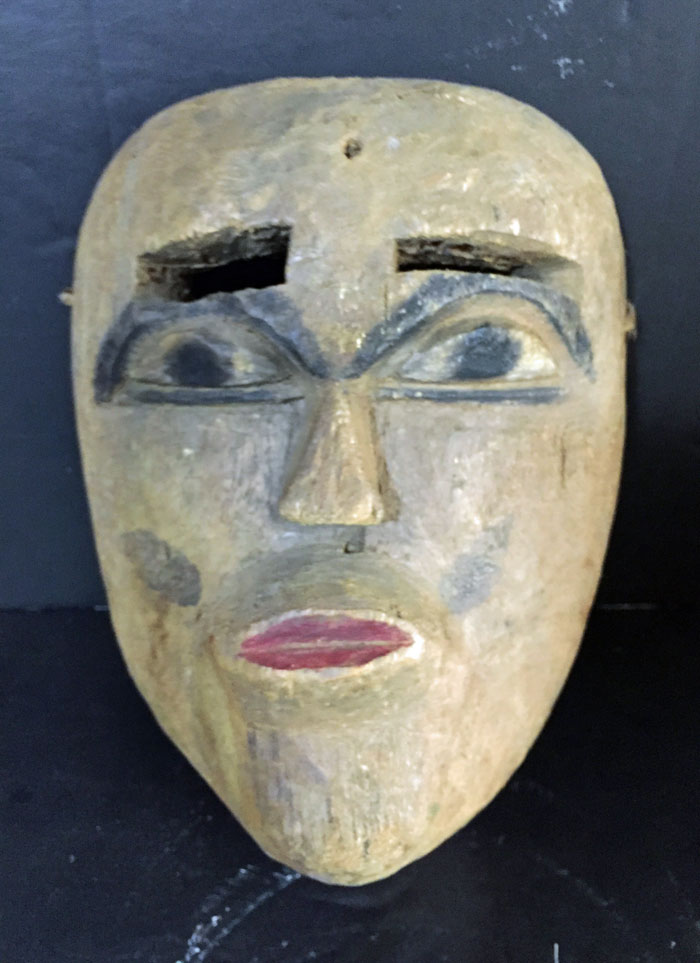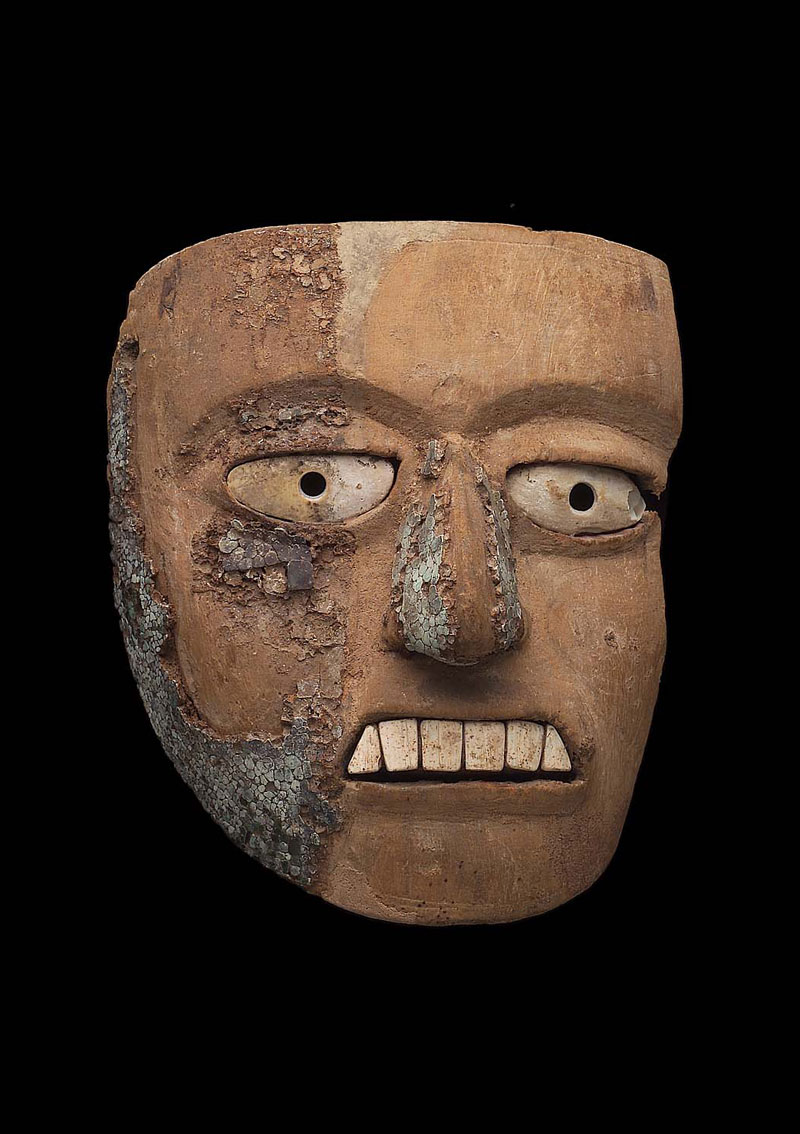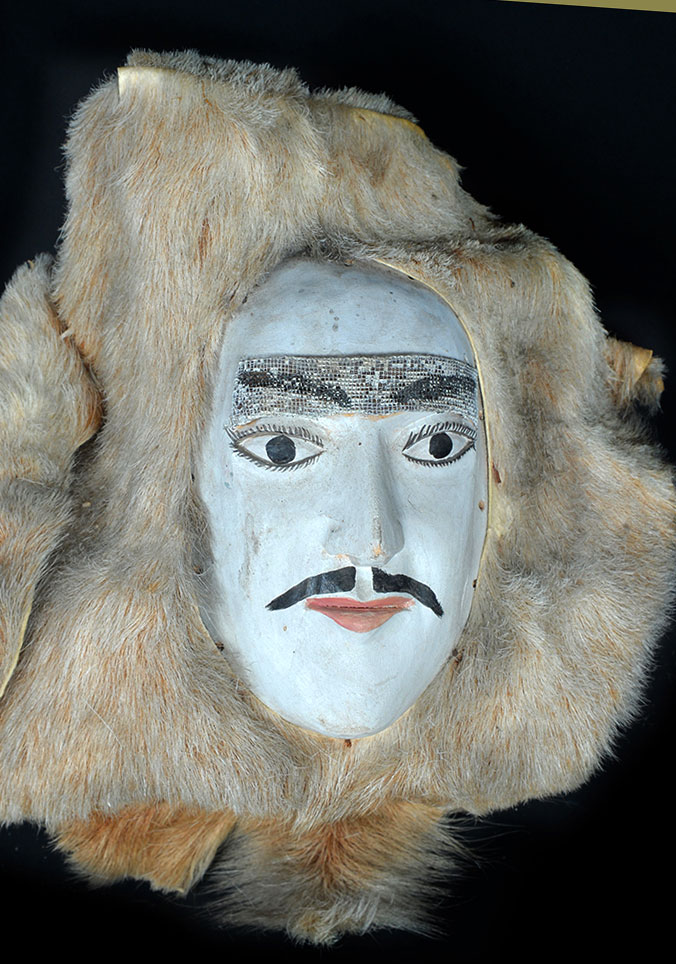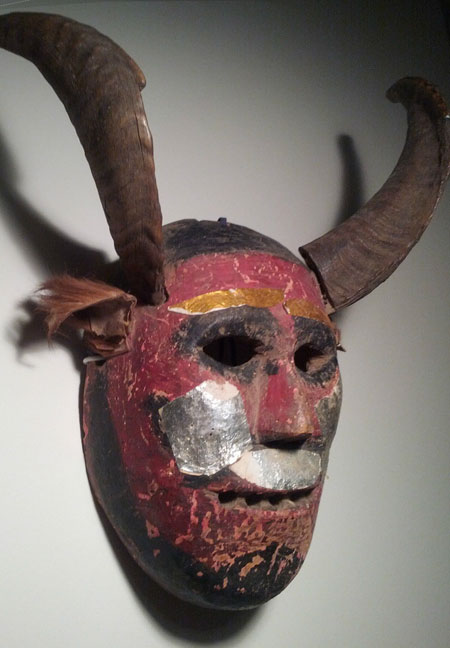Day of the Dead celebrations will soon kick off in Mexico, with millions of revelers taking to the streets to honor their lost loved ones. People often construct their own private altars, where they honor the dead with a number of different gifts. Sugar skulls and marigolds are among the offerings given up, as well as the favorite food and drinks of the departed. Skull masks are both worn and displayed. As the years have gone by, the designs have become even more intricate and extravagant. Not long ago, the first ever Day of the Dead parade took place in Mexico’s capital and it’s believed that this addition to the…
-
-
One-eyed, black-skinned Moor from Mexico
Q: I posted the last 2 masks from Veracruz, both Moors but in very different styles. Scans are attached f you’re interested in seeing them. Aaron, 1218 A: As always, thank you for sharing your recent mask acquisitions with us. It seems you are able to tract down wonderful finds in any part of the world. Couldn’t we do the same? Try this… Just Google the indigenous people who populate the area where you are going. Also, don’t be afraid to visit some museums or read books ahead of time. The more you know, the better your results will be. Obviously, Aaron does a lot of research. Here is what…
-
Mexican or Guatemalan clay mask?
Q: I bought this mask 30 years ago while traveling in Mexico. It might be from around Oaxaca. I find the figure in the forehead to be very intriguing. Can you tell me anything about it. It’s either clay or a very hard plaster. Beverly, 1216 A: I have seen these painted ceramics before and assumed yours was from Guatemala because of the features. The first Guatemalan mask in my book, Masks of the World, on page 140, is similar to yours. But I’ve also seen Mexican masks made of terracotta. Several very experienced collectors I know consider them decoratives made strictly for the tourist trade. Clay is a terrible…
-
Clown mask from Veracruz
Q: I posted 3 more of the masks I acquired in Veracruz over the summer. I thought you might enjoy seeing them. I’ll be posting more, and more from Jalisco (and a few from Estado de Mexico) as well in the next couple of weeks. Aaron, 1215 A: Here is Aaron’s thorough description. TITLE: Payaso Mask GENERAL REGION: Latin America COUNTRY: Mexico SUBREGION: Veracruz ETHNICITY: Nahua DESCRIPTION: Payaso (Clown) Mask MAKER: Unknown CEREMONY: Santo Entierro de Cristo; Fiesta de la Asunción; Carnival AGE: 2013 MAIN MATERIAL: wood OTHER MATERIALS: oil-based paint Santo Entierro de Cristo (“Sacred Burial of Christ”) is an important festival in parts of Veracruz, particularly in the region of Teocelo, and is celebrated on…
-
Mexican homemade mask
Q: I bought this mask many years ago at a folk art store in Denver, CO, which was going out of business. They had very little info on it, except to say they thought it was called “Huasteca” and was from Mexico. I have tried to research it…to no avail. Made of very light wood and has blushing cheeks. Could you give me more details about this mask? I’d appreciate it. Mickey, 1207 A: Homemade masks can come from almost anywhere in Mexico, not just the Huasteca region of Hidalgo. Many Mexicans are so poor they can’t afford to buy from a local mask maker. Some of these amateurs are…
-
Authentic gallery masks
Aaron: TITLE: Tastoan TYPE: mask GENERAL REGION: Latin America COUNTRY: Mexico SUBREGION: Jalisco ETHNICITY: Nahua DESCRIPTION: Tastoan MAKER: Ubaldo Macías Bernabe, Tonalá (1972- ) CEREMONY: Fiesta de Santiago el Apostól AGE: 2016 MAIN MATERIAL: leather OTHER MATERIALS: cow teeth; animal bone; acrylic paint; lacquer; glue paste; wire; thread; elastic bands In parts of Jalisco and Zacatecas, the holiday in honor of Santiago el Apostól (St. James the Apostle) is held every 25th of July. Celebrants carry spears and dress in long pants, leather chaps, and boots, with demonic masks made of wood (Zacatecas) or molded leather (Jalisco) covered with a montera (headdress) of hair or plant fiber. The festival commemorates a battle between the indigenous warriors of…
-
Rey del Moros from Veracruz
Q: I posted a few others from my trip to Veracruz earlier in the summer. Aaron, 1195 A: Aaron sent some more excellent masks. Here is what he says about this one. TITLE: Rey de Moros TYPE: mask GENERAL REGION: Latin America COUNTRY: Mexico SUBREGION: Veracruz ETHNICITY: Nahua DESCRIPTION: Rey de Moros (King of the Moors) MAKER: Antonio Vázquez Tepo, Xico (1933- ) CEREMONY: Danza de los Moros y Cristianos AGE: 2016 MAIN MATERIAL: wood OTHER MATERIALS: oil-based paint The Danza de los Moros y Cristianos (Dance of the Moors and Christians), also known as the Danza de la Conquista, is an important celebration in the Mexican state of Veracruz. The dance reenacts the reconquest Spain…
-
La Puta mask from Naolinco, Veracruz
In case some of you don’t know Spanish, La Puta means whore. These characters often show up in Mexican dances and parades. More from Aaron on his buying trip to Veracruz, Mexico: “Another guy, who wasn’t a mask maker but sold sweets in front of his house, had a truly amazing collection. As we passed by, I admired his collection, and he invited me into his tiny 2-room home. Classic Mexican hospitality. This guy had nothing, probably made $2000/year. I asked him if he was willing to sell any of them, and he said they belonged to his children and grandchildren, so no dice. I could have made him quite…
-
Cobra Cavalera made by Lino Mora
Aaron often sends photos of masks he has purchased recently. This one is by a famous mask masker who lives in Veracruz, Mexico. His masks are worn by dancers in the area and are sold in shops and galleries. His masks are always distinctive, with faces that often remind me of the Grim Reaper. Step into the dark side and buy one of his masks for your collection. Lino’s masks are usually quite affordable. Here is what Aaron writes. As you can see, he does a great job of documenting his collection. TITLE: Calavera Cobra TYPE: mask GENERAL REGION: Latin America COUNTRY: Mexico SUBREGION: Veracruz ETHNICITY: Nahua DESCRIPTION: Cobra-Headed Calavera MAKER: Lino Mora Rivera,…
-
Tlacololero mask from Guerrero, Mexico
Q: I’m having a hard time figuring out where this mask would be from. It’s very simple but the wood seems to have some age to it. Any advice would be great thanks! Dustin, 1182 A: I think this face would have been used in the Dance of the Tlacololeros at least 50 years ago. That thick wood is probably tzompantli, a light weight material favored by Mexican carvers in the old days. Having said that, there is no way I can be sure because Mexican carvers have been making and aging fakes since the late 19th century. Unlike an African mask, the odds favor this piece as being authentic.…
